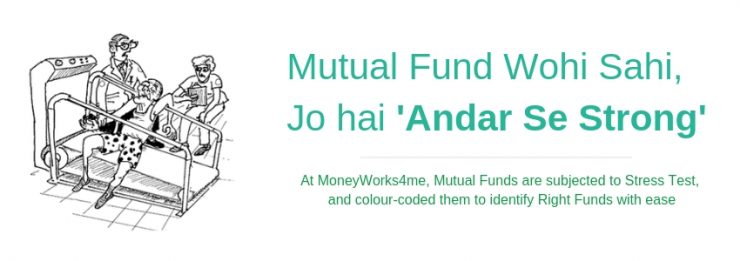There are roughly 350 Equity Mutual Funds in the market. Selecting the right ones can be pretty complicated. The current method for selecting a fund based on the highest past returns is popular because it is simple and at first glance looks logical. This way of looking at returns is like driving a car looking at the rear view mirror. It’s misleading, inadequate and risky. Misleading, because ‘performance’ depends on the time and period of of measurement. It’s inadequate because it does not tell us how much risk the fund manager is taking and whether the fund is likely to perform in the future. It’s risky because funds that give the highest returns today have stocks that are overvalued and likely to correct or stagnate.
So, you should select funds that are inherently strong and will perform well through good and tough economic times.
To assess whether a fund can measure up to this stringent criteria we check it on 3 important attributes:
• Quality of Holdings: Quality of holdings is an assessment of how safe and strong are the company-stocks that the fund owns. It is quite possible that in the race to stand out amongst its peers in terms of returns, a fund might hold riskier stocks, as higher risks stocks may generate higher returns. However, it can backfire in terms of higher drawdowns-bigger losses when the market corrects or the economy tanks. This may not be acceptable to you.
And this can be tricky to find out because funds usually play it reasonably safe when it comes to their top 10 holdings, but all the risks could be sitting below that. We do a deeper analysis of a fund’s portfolio of companies and check for stocks that are (i) low on quality (ii) cyclical (iii) poor corporate governance (iv) turn around or (v) poor liquidity. Ensuring a strong suit of companies prevents rude surprises and good returns in the long term
• Consistency of Returns: As an investor we are more interested in a fund earning consistent returns that compounds rather than swings from very high to low/very low. We also need a way of looking at returns that do not have the limitations of using past returns i.e start and end date bias; especially because we could enter and exit at any time.
For this you need to look average rolling returns and rolling Alpha of a fund over at least 3/5/7 years’ time period. This tells how well a fund performed with different start and end dates on an absolute scale as well as compared to its benchmark. Average rolling returns for the period 3/5/7 tends to smoothen out the very good or very poor performance that could be largely due to the market volatility/movement.
• Expense: Mutual funds charge fees for managing portfolio and generating higher returns than the benchmark. A fund that earned higher excess returns may well deserve charging higher fees but not otherwise. It is getting tougher for funds to outperform the market/index – many large cap funds haven’t out-performed their benchmark index. Such funds need to keep their expenses low to remain attractive to investors.
Moneyworks4me assess every equity mutual fund on these parameters and then shortlist the ones that are ‘andar-se-strong’ and hence worth investing in.
If you liked what you read and would like to put it in to practice Register at MoneyWorks4me.com. You will get amazing FREE features that will enable you to invest in Stocks and Mutual Funds the right way.
Need help on Investing? And more….Puchho Befikar
Kyunki yeh paise ka mamala hai
Start Chat | Request a Callback | Call 020 6725 8333 | WhatsApp 8055769463










